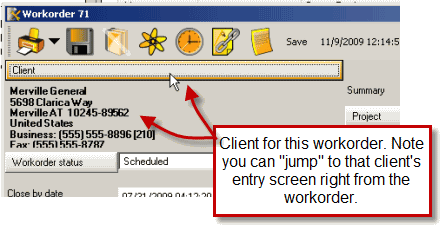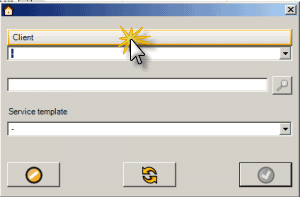
Clients are who you are performing service for.
A workorder, quote and/or PM can be created for a Client. And in the workorder (or quote or PM) you can further identify "Units" that are "owned" by the client that are serviced.
A client may be a company, a client may be an individual, a client may even be a bus. What you use "Client" as in AyaNova would depend on whom or who service is performed for in your service industry.
Examples:
Property management service - each "Client" equates to an apartment. And areas of the apartment (living room, kitchen, etc) and/or equipment in the condo such as dishwasher, bathtub, etc is identified as a "Unit". And "Head Office" equates to the entire building or owner of that building for billing purposes. This way when you create a service workorder for the apartment (i.e. Client) and also can identify the specific equipment or room (i.e. Unit in the apartment) that requires service and maintain service history on it.
Computer service - each "Client" equates to a customer that you provide computer service to. And each computer equipment owned by that client is identified as a "Unit".
3 ways to create a client
1. Via the New... ![]() menu option in the Client grid
menu option in the Client grid
2. Via the Client jump button within another entry's screen
For example: in the Client selection window when creating a new workorder, click on the Client jump button with no client selected, and a new client entry screen will display for you to enter a new client.

See also: Jump Buttons
3. Import via the importexport.csv utility
Client’s information is entered once via the Client entry screen. When a service work order, quote, or preventive maintenance item is needed for a client, you only have to select the client from the drop down selection list without having to re-entry information.
A history of all service workorders, quotes, preventive maintenance and units that are associated with a single client is therefore maintained.
As you can change who the Head Office is for a client, this can be useful for maintaining service history even if the client or unit changes.
Example:
A office building uses AyaNova to manage internal computer service. The department Accounting is a "Head Office". Bob who is an accountant is a "Client" (a "client") that has its head office as Accounting. Bob's printer is a "Unit" with Bob selected as the "Client" in its unit entry screen.
When service is performed for Bob's printer, the printer is selected as the unit in the workorder for Bob.
And if down the road, the printer is moved to Mary's office in the Loans department (Loans is another "Head Office" and Mary is another "Client"), in that unit's entry screen for that printer, the client is easily changed to Mary.
This way, when look up previous service history on that printer (Unit), will still be able to see all workorders where that unit was selected, even when it was "owned" by Bob.
AyaNova can be localized to display field label text in any language - for example, you may want what is labeled as "Clients" to be labeled as "Apartment" or "Employee" etc - whatever makes the easiest use for your type of service
See also for more details: